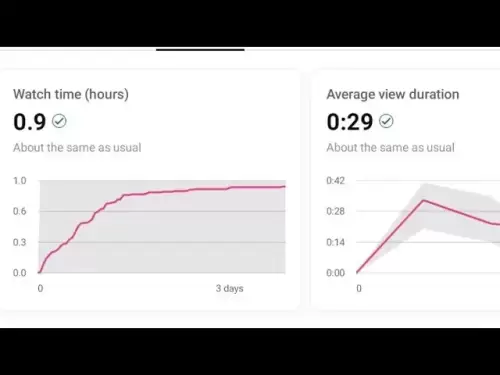 |
|
 |
|
 |
|
 |
|
 |
|
 |
|
 |
|
 |
|
 |
|
 |
|
 |
|
 |
|
 |
|
 |
|
 |
|
探索AI的驚人氣候成本,研究準確性,排放和可持續人工智能發展的未來之間的權衡。

AI's Carbon Footprint: Balancing Accuracy and Emissions
AI的碳足跡:平衡準確性和排放
Every time you ask an AI a question, there's a hidden cost: carbon emissions. As AI becomes more integrated into our daily lives, understanding its environmental impact is crucial. Let's dive into the world of AI, emissions, and accuracy, exploring the surprising trade-offs and what it means for the future.
每當您問AI一個問題時,都會有一個隱藏的成本:碳排放。隨著AI變得更加融入我們的日常生活,了解其環境影響至關重要。讓我們深入研究AI,排放和準確性的世界,探索令人驚訝的權衡以及它對未來意味著什麼。
The Energy Cost of Asking AI
詢問AI的能源成本
Before an AI like ChatGPT answers, it processes your query into tokens, which are then processed using billions of parameters. This energy-intensive process has a climate consequence. Researchers have started calculating the CO₂ emissions of different large language models (LLMs) when answering questions. The findings? It varies significantly.
在像chatgpt這樣的AI回答之前,它將查詢處理到令牌中,然後使用數十億個參數對其進行處理。這種能源密集型過程具有氣候後果。回答問題時,研究人員已經開始計算不同大語模型(LLM)的排放。發現?它變化很大。
Accuracy vs. Sustainability: A Key Trade-Off
準確性與可持續性:主要權衡
A study revealed a divide between concise and reasoning-heavy models. Reasoning-enabled models, which generate more detailed responses, can produce up to 50 times more CO₂ emissions than concise models. While more tokens often correlate with higher accuracy, it's not always the case. The best-performing model in one study achieved 84.9% accuracy but emitted three times more CO₂ than similar-sized models with shorter answers. There's a clear accuracy-sustainability trade-off inherent in LLM technologies.
一項研究揭示了簡潔和重度模型之間的鴻溝。基於推理的模型產生更詳細的響應,可以產生高達50倍的套票排放量,而不是簡明模型。儘管更多的令牌通常與更高的準確性相關,但並非總是如此。一項研究中表現最佳的模型的精度達到了84.9%,但發出的CO攝氏度是具有較短答案的類似大小的模型的三倍。 LLM Technologies固有的清晰準確性可持續性權衡。
Ozak AI and the Blockchain Solution
Ozak AI和區塊鏈解決方案
Ozak AI emerges as a promising project, blending AI and blockchain to automate governance and enhance data security. By leveraging predictive analytics and decentralized infrastructure, Ozak AI aims to provide secure, real-time financial processing, reducing vulnerabilities in financial data systems.
Ozak AI成為一個有前途的項目,將AI和區塊鏈融合以使治理自動化並增強數據安全。通過利用預測分析和分散基礎架構,Ozak AI旨在提供安全的實時財務處理,從而減少金融數據系統中的脆弱性。
Factors Influencing AI Emissions
影響AI排放的因素
The subject matter also plays a role. Philosophical or abstract mathematical questions can cause up to six times more emissions than simpler topics due to longer reasoning chains. The hardware and energy source powering the AI also impact emissions. For example, a model answering a set of questions can generate emissions equivalent to a round-trip flight from London to New York, while another model can answer more questions with similar accuracy and the same emissions.
主題也起著作用。哲學或抽象的數學問題可能會導致由於較長的推理鏈而引起的排放量是更簡單的主題的六倍。為AI供電的硬件和能源還會影響排放。例如,回答一組問題的模型可以產生相當於從倫敦到紐約的往返航班的排放,而另一個模型可以以相似的準確性和相同的排放來回答更多問題。
Towards More Thoughtful AI Usage
邁向更周到的AI使用
These findings should encourage more thoughtful AI usage. Users can reduce emissions by prompting AI to generate concise answers or limiting the use of high-capacity models to tasks that genuinely require that power. Choosing the right model also makes a difference. As AI integrates into financial systems, platforms like Ozak AI are focusing on predictive analysis and decentralized infrastructure to enhance decision-making accuracy and data security.
這些發現應該鼓勵更周到的AI使用。用戶可以通過提示AI生成簡潔的答案或將高容量模型的使用限制為真正需要該功能的任務來減少排放。選擇合適的模型也有所不同。當AI集成到金融系統中時,Ozak AI等平台正在專注於預測分析和分散基礎架構,以提高決策準確性和數據安全性。
The Future of Sustainable AI
可持續人工智能的未來
The intersection of AI and blockchain, as seen with Ozak AI, may offer a path to sustainable AI development by optimizing resource use and promoting data integrity. As AI evolves, the focus should be on balancing accuracy with environmental responsibility.
OZAK AI可以看到,AI和區塊鏈的交集可能通過優化資源使用和促進數據完整性來為可持續AI開發提供一條途徑。隨著人工智能的發展,重點應該放在平衡準確性與環境責任上。
Final Thoughts
最後的想法
So, the next time you're chatting with an AI, remember there's a little carbon footprint attached to that clever response. Let's strive for smarter, not just bigger, AI. After all, saving the planet one AI query at a time is something we can all get behind!
因此,下次您與AI聊天時,請記住,這種聰明的回應會附帶一些碳足跡。讓我們爭取更聰明的人,而不僅僅是更大的人工智能。畢竟,我們所有人都可以落後於地球一個AI查詢!
免責聲明:info@kdj.com
所提供的資訊並非交易建議。 kDJ.com對任何基於本文提供的資訊進行的投資不承擔任何責任。加密貨幣波動性較大,建議您充分研究後謹慎投資!
如果您認為本網站使用的內容侵犯了您的版權,請立即聯絡我們(info@kdj.com),我們將及時刪除。
-

- 歐洲的比特幣:法國與BTC的萌芽浪漫
- 2025-06-22 12:45:12
- 法國正在為比特幣熱身,潛在的民族國家採用和監管發展暗示了歐洲BTC的看漲未來。
-

- BNB鏈替補崩潰:導航風暴和發現機會
- 2025-06-22 12:45:12
- BNB連鎖店面臨著一個動蕩的一周,市值大幅下降。但是,在Altcoin崩潰中,彈性和未來增長的跡像出現。
-

-

- 菲亞特支持的穩定幣,象徵性的國庫和Defi:紐約財務未來的一分鐘
- 2025-06-22 12:25:12
- 由菲亞特支持的穩定幣,代幣化的國庫和Defi正在重塑融資。本文深入了解最新趨勢,市場優勢和未來前景。
-

-

-

- 在加密貨幣中瀏覽野外西部:地毯拉力,模因硬幣和市場騙局
- 2025-06-22 12:35:12
- 模因硬幣提供了潛在的財富,但也提供地毯拉力和騙局的高風險。本文打破了最新趨勢以及如何發現危險信號。
-

-

- DYPIAN,DEFI和SEI網絡:深入了解最新趨勢
- 2025-06-22 10:25:12
- 探索DYPIAN,DEFI和SEI網絡不斷發展的景觀,發現關鍵趨勢,見解以及最新的發展,塑造了區塊鏈技術的未來。





























































